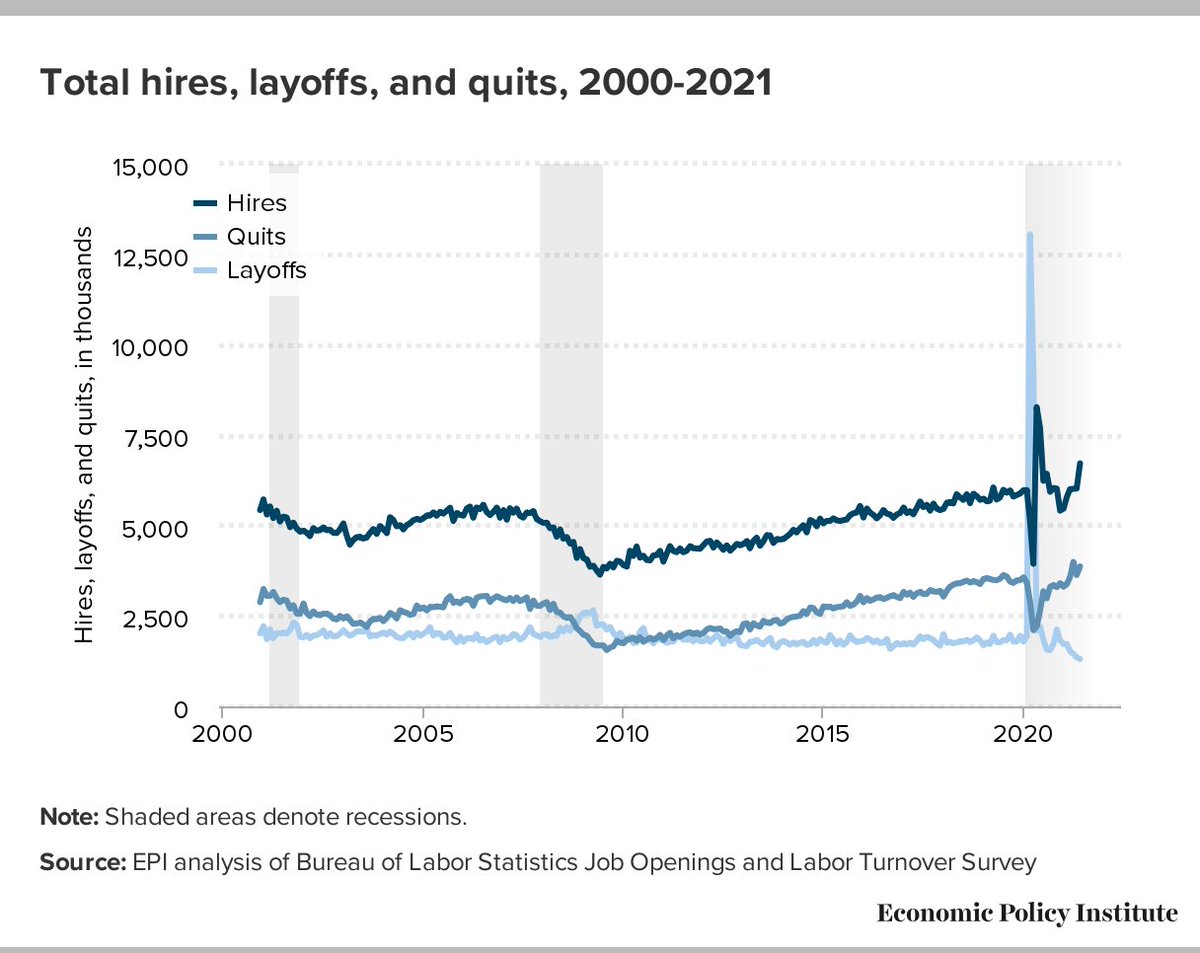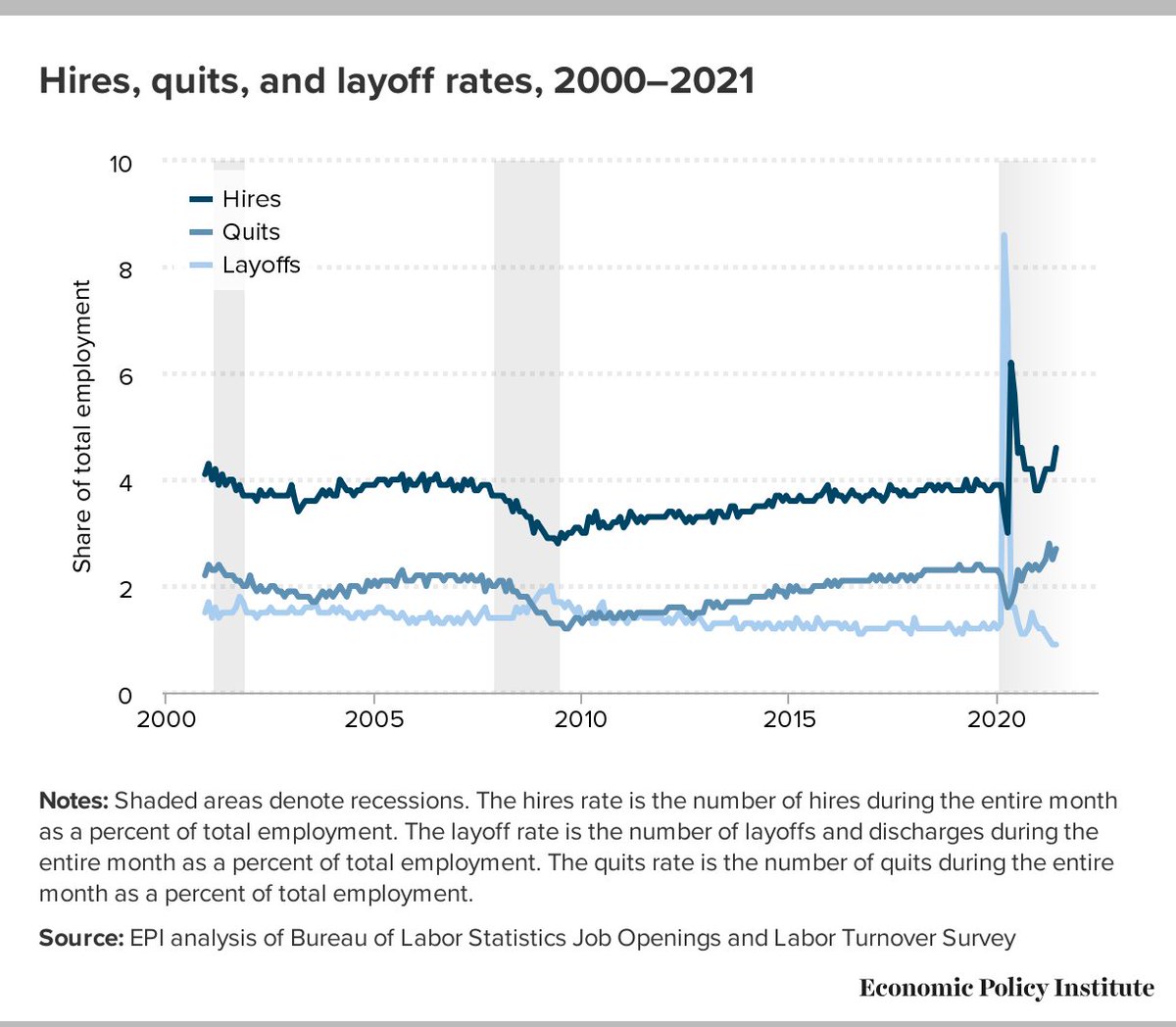
The 2020 Census report highlights the costs of the pandemic and benefits of early policy safety net measures.
Key takeaways:
- median household income down
- full time earnings up
- stimulus payments and UI very effective at reducing poverty for millions
epi.org/blog/the-2020-…
Key takeaways:
- median household income down
- full time earnings up
- stimulus payments and UI very effective at reducing poverty for millions
epi.org/blog/the-2020-…
The Census report on income, poverty, and health insurance for 2020 provide insights into the effects of the pandemic on earnings and incomes as well as the vital measures put in place to reduce economic insecurity during the steep economic downturn.
census.gov/content/dam/Ce…
census.gov/content/dam/Ce…
Median household income fell 2.9% as millions lost their jobs and poverty rose by 1.0 percentage point. The losses to income and increases in poverty would have been far worse if not for the rapid and large boosts to vital safety net programs legislated by Congress in 2020.
The stimulus payments moved 11.7 million people out of poverty and unemployment insurance—expanded in 2020—lifted 5.5 million out of poverty in 2020.
Warning on interpreting the full-time earnings data for 2020. We saw the same phenomenon when examining hourly wage data for 2020. There were large changes in who was able to retain full-time employment in 2020 (and who was not).
epi.org/publication/st…
epi.org/publication/st…
Median earnings for full-time workers rose 6.9%. More lower paid workers lost their jobs so the remaining workers are higher paid, on average, leading to a mechanical increase in earnings. This is not an increase in living standards for those working: it’s a quirk of arithmetic.
The number of full-time workers decreased by about 13.7 million, the largest decrease in the history of this series. Because of occupational segregation as well as caregiving demands, women were harder hit in the 2020 downturn and their employment has been slower to recover.
Median men’s earnings for full-time workers rose 5.6% between 2019 and 2020, while median women’s earnings rose 6.5%. This is likely due to the composition of who retained full-time employment as COVID-19 shuttered large swathes of the economy.
This faster increase for women may again be indicative of just who was able to keep their jobs during the pandemic, and the fact that the low-wage workforce who went jobless due to COVID-19 slowdowns in economic activity was disproportionately female.
In 2020, typical full-time women workers were paid just 83.0% of typical full-time men workers, little change from prior years.
#equalpay
#equalpay
The real median earnings of all workers decreased 1.2% between 2019 and 2020, displaying a real divide between full-time workers who were relatively more insulated from the pandemic recession and everyone else who either lost their jobs or lost wages and work hours.
Although labor market earnings are a significant portion of family income for the vast majority of U.S. households, the rise in earnings did not translate into increases in income because of the sheer numbers of workers who lost their jobs.
Median household income fell 2.9%.
Median household income fell 2.9%.
Household incomes fell between 2019 and 2020 across all racial and ethnic groups reported. Median household income fell the most for Asian household between 2019 and 2020, a loss of 4.5%. Median Black household incomes fell the least between 2019 and 2020, a drop of 0.3%.
The racial divide between white, non-Hispanic households and Black households remains large. In 2020, Black household income is just 61.2% of white household income.
These persistent racial disparities—deeply rooted in historical and ongoing social and economic injustices—contributed to greater susceptibility to the pandemic and the ensuing recession for Black and Hispanic workers and families.
epi.org/press/latinx-w… epi.org/publication/bl…
epi.org/press/latinx-w… epi.org/publication/bl…
Because of the devastation of the labor market at the lower end of the wage distribution, the poverty increases in 2020 were far from unexpected.
Between 2019 and 2020, the official poverty rate rose 1.0 percentage point, an increase of 3.3 million more people living in poverty.
Between 2019 and 2020, the official poverty rate rose 1.0 percentage point, an increase of 3.3 million more people living in poverty.
The losses to income and increases in poverty would have been far worse if not for programs such as unemployment insurance to workers who suffered from job loss, as well as the ad hoc expansions to those programs legislated in the wake of COVID-19’s arrival.
While Social Security remains the largest poverty reducer in the U.S.—reducing the number who would have been in poverty in 2020 by 26.5 million—the stimulus payments passed in response to the COVID-19 shock moved 11.7 million people out of poverty.
Expanded unemployment insurance lifted 5.5 million out of poverty in 2020. The expansions of eligibility and enhanced payments in 2020 meant that unemployment insurance reduced poverty for ten times as many people that were kept out of poverty by unemployment insurance in 2019.
Policymakers take note: Without government intervention, the pandemic and ensuing economic shock would have translated into even more widespread devastation and large-scale losses of incomes and a spike in poverty.
• • •
Missing some Tweet in this thread? You can try to
force a refresh








